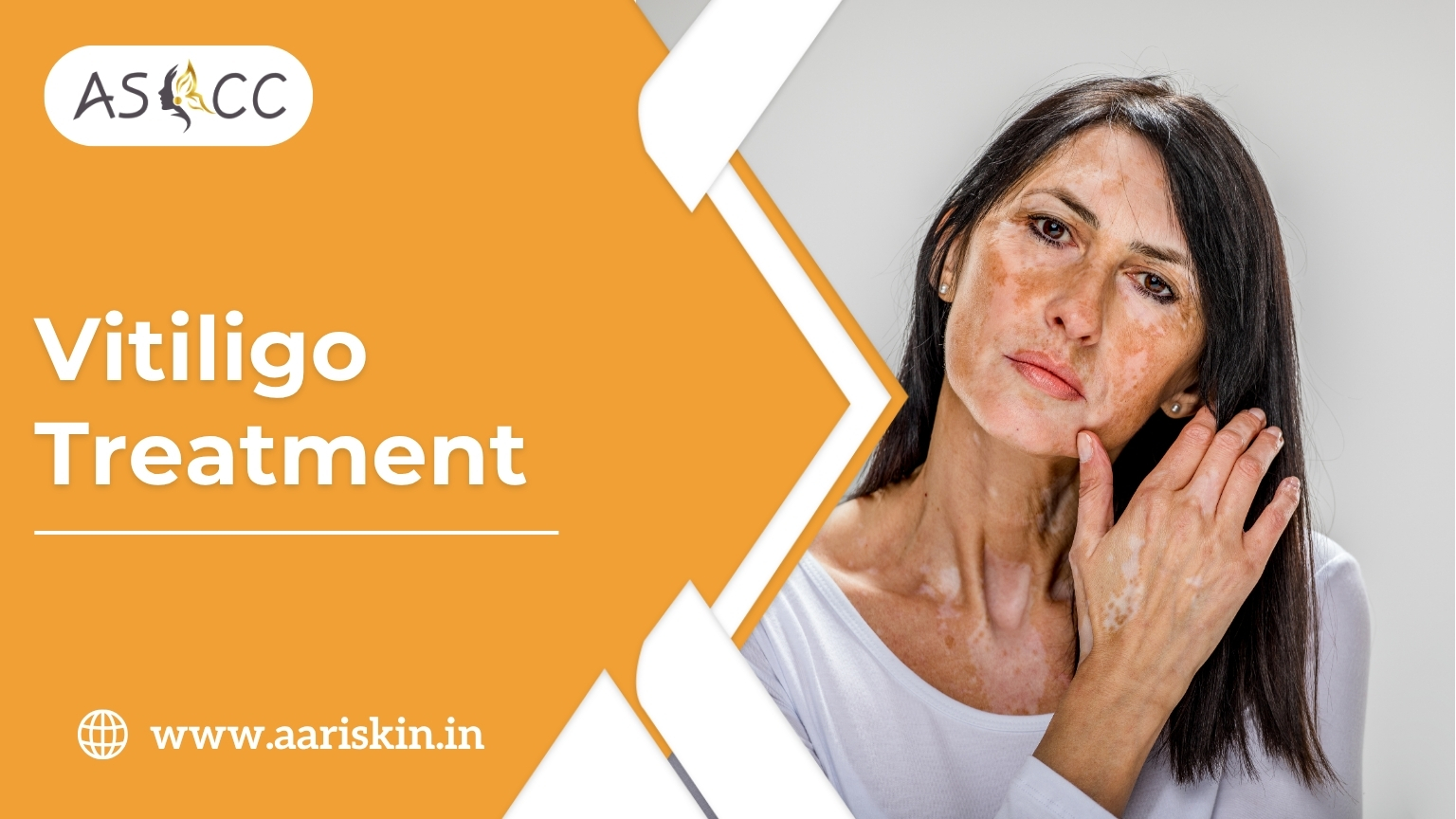What is Vitiligo?
Vitiligo is a long-term skin condition where white patches develop on the skin due to loss of melanin, the pigment responsible for skin color. It can affect any part of the body and may also involve hair or mucous membranes (like lips).
Vitiligo is not contagious or dangerous, but it can have emotional and psychological effects, especially if it appears on visible areas.
Causes of Vitiligo:
- Autoimmune response (body attacks its own pigment cells)
- Genetic predisposition
- Oxidative stress
- Sunburn or skin trauma (Koebner’s phenomenon)
- Often no exact cause is found
Treatment Goals:
- Stop or slow the spread of white patches
- Repigment (restore color) in affected areas
- Improve cosmetic appearance and self-confidence
Treatment Options for Vitiligo:
Topical Medications
- Steroid creams: Help reduce inflammation and promote pigmentation
- Calcineurin inhibitors (Tacrolimus, Pimecrolimus): Useful for face and sensitive areas
Phototherapy (Light Treatment)
- Narrowband UVB therapy (2–3 times/week for several months)
- PUVA (Psoralen + UVA): Less commonly used now
- Stimulates pigment-producing cells to repopulate the skin
Excimer Laser (308 nm)
- Targeted laser therapy for small patches
- Effective for localized vitiligo on face, neck
Oral Medications
- Used in rapidly spreading cases (like corticosteroids or immunomodulators)
Surgical Options (for stable vitiligo)
- Punch grafting, suction blister grafting, or melanocyte transfer
- Done for localized patches that haven’t responded to medical therapy
Camouflage / Cosmetic Solutions
- Special skin-tone-matching makeup or micropigmentation (tattooing)
- Improves appearance, especially for events/photos
Who Can Be Treated?
- Children and adults of all skin types
- Stable vitiligo (no new spots in 6–12 months) is ideal for surgical treatment
- Active vitiligo is managed with medications and light therapy






